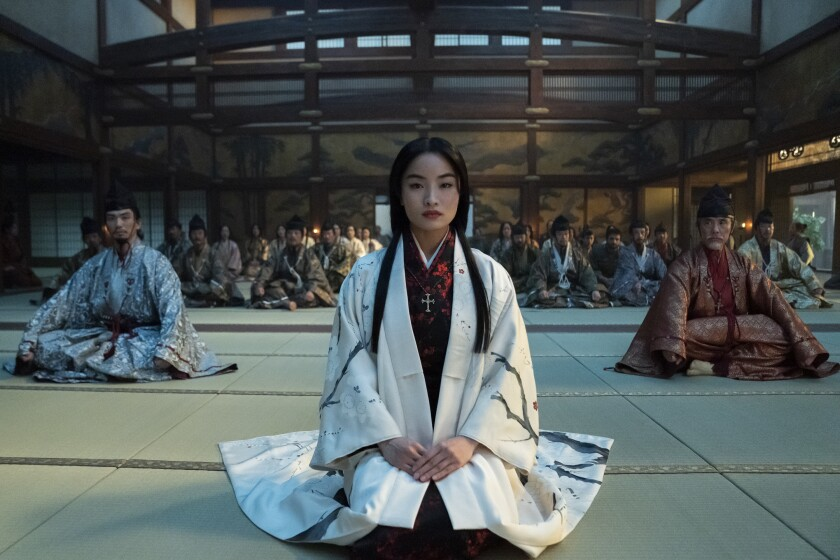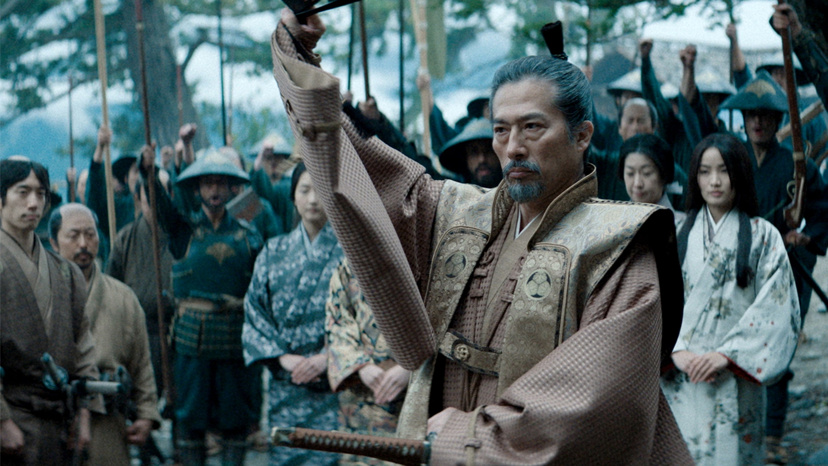Minor spoilers for Shōgun
It’s been a while since a show has captured the imagination and attention to the degree that FX’s Shōgun has. Based on the novel of the same name, the series is set during the early 1600s and marries history with a flourish of fiction. Full of complex and well-written characters, attention to detail, great effects and a gripping story, Shōgun ticks all the boxes and is an easy recommendation. Let’s dive into why.
Shōgun comes to us over at FX from relative newcomers Justin Marks (Top Gun: Maverick) and Rachel Kondo. The show opens up in the year 1600, when a Protestant English pilot named John Blackthorne (Cosmo Jarvis) finds himself and his starving Dutch crew washed up on the Japanese shores before being promptly taken as prisoners. They’ve arrived at something of a bad time in Japan, as the leader of the country has recently died, leaving the country under the stewardship of five regents as they await for the heir to come of age. Enter Lord Yoshii Toranaga (Hiroyuki Sanada, who also serves as executive producer), one of the five regents who finds himself at odds with the other four, specifically Lord Ishido (Takehiro Hira) about the direction Japan should be going. Toranaga finds himself splintering off from the group in an attempt to save Japan from the other regents and eventually takes on Blackthorne under his protection to exploit his superior naval tactics to his advantage in the battles to come. To help with communications, Toranaga assigns Lady Mariko (Anna Sawai), a highborn Catholic convert with a checkered past who can speak Portuguese, a language John also speaks due to his time on the sea and the conflict between England, Spain and Portugal (read, Catholic/Protestant) at the time. While they speak Portuguese amongst themselves, we hear it as English, resulting in a show that’s probably 70% spoken Japanese, and 30% English.

This is in fact the second adaptation of the book, after the five-part limited series that aired in 1980 on NBC. Unlike that version and the novel though, the 2024 Shōgun changes things around a bit in terms of its narrative presentation. Whereas the original tale has John as the protagonist of the story, this remake makes him one of three protagonists, the others being Mariko and Lord Toranaga. This changes the dynamic of the story completely, going from a tale of discovery from the point of view of an English outsider to being a Japanese political story told from within, one ripe with, ironically, deception and honour-bound review.

John may be a prisoner who can’t speak the local language, but he isn’t some whipped prisoner bowing and scrapping; he often resists the orders of his captors, so much so that they seemingly respect that he has a mind of his own and it’s a cunning one at that, but he’s never portrayed as a saviour. Mariko is a character who isn’t all who she seems to be and is basically playing 4D chess while the rest are playing checkers; her family’s past has put her in a precarious position within the nobility but she also feels duty-bound to the church. Toranaga is depicted as being a saviour, but he’s far more nuanced and complex than that, so much so that it’s safe to question his motivations and ambitions. And that’s not even mentioning the dozen or so side characters, from Yabushige( Tadanobu Asano of Thor fame) to the Portuguese priest Father Martin Alvito (Tommy Bastow) and the mother to the young heir Ochiba no Kata (Fumi Nikaido), who is aligned with Lord Ishido but has a familial connection to Lady Mariko. With all these characters, with their own goals and ambitions, this becomes a show that demands your utmost attention, as there’s very little in the way of handholding and exposition. So take note.

Shōgun feels like a time machine to an era that’s frighteningly different than our own today. Ritual suicide called seppuku happens a lot in this show and enemies bow before engaging in combat. Poetry is very important to these people and their movements feel very deliberate and precise, so much so that a Master of Gestures was hired for the show to make sure everything from walking to pouring tea was authentic to the period. It’s all fascinating, despite how different it is to our modern sensibilities.

Despite being grand in scope, with all its political machinations and ambitions, Shōgun is a very human drama. There’s very little in the way of action and what action is shown is often brief and to the point; don’t expect later seasons of Game of Thrones, think season one. And that’s not a criticism either, I think it was the right call to keep this story focused on the characters and the world. Not only because the writing was so good, but because when there was violence, it was often abrupt and/or horrific.

Losing one’s head in the opening episode may have been unexpected, but nothing compares to how the show depicted chain-shot cannonballs. Usually, cannons in cinema and film feature a big explosion of dirt and a ragdoll flying through the air, maybe a Wilhelm Scream will be played. Not in Shōgun though. Episode four features perhaps the most devastating and horrific display of cannonballs I think I’ve ever seen. And yet despite how gruesome it was, it was all in service of the narrative. That’s what Shōgun does so well; everything feels deliberate and meticulously planned, with each and every gesture operating in service of the overall story. Shōgun never rushes a scene, allowing us to sit in on quiet moments, which makes the growth of the characters, particularly the “barbarian” John, also known as Anjin, feel rewarding and earned.
The set design and costumes for Shōgun are also spectacular. You’d be forgiven for thinking they shot Shōgun on location in Japan, but it was actually filmed in Canada. Villages and estates all feel authentic and lived-in. The costumes feel like they were pulled out of a museum, especially the completed Samurai armour sets, which were ornate and highly detailed. In other words, works of art in of themselves.

I have two bits of criticism against Shōgun, but they’re minor and some viewers may not even notice it. One is some shoddy green screen at times; the lighting in these scenes makes the effect stand out and the background appears flat. Thankfully, there’s not a lot of these scenes so it never ruins the experience. Another thing I found distracting was the sporadic use of vignetting and really harsh depth of field which makes the background not only extra blurry but often distorted. I’m not sure if there was a mandate by FX to have a certain aesthetic, but like many shows lately, I found both effects ranged from distracting to messy. But I’m also looking out for these things, you may not and if so, you may not even notice and it shouldn’t detract from the overall cinematography. Oh, and this may be Disney+’s fault (which is where I watched Shōgun), but I found that sometimes the subtitles passed way too quickly, but when I went back a few seconds, the subtitle would fix in place for the right amount of time, suggesting that there may be the occasional glitch on the app with the display of the subtitles.

But these are minor complaints and should absolutely not detract from the overall quality of Shōgun. This is a show that feels like it was made by artists with acute attention to detail who knew to prioritize character. This is a complex, layered and dense show that earns its big moments by building on a foundation of smaller, quieter moments. Must-see television.
